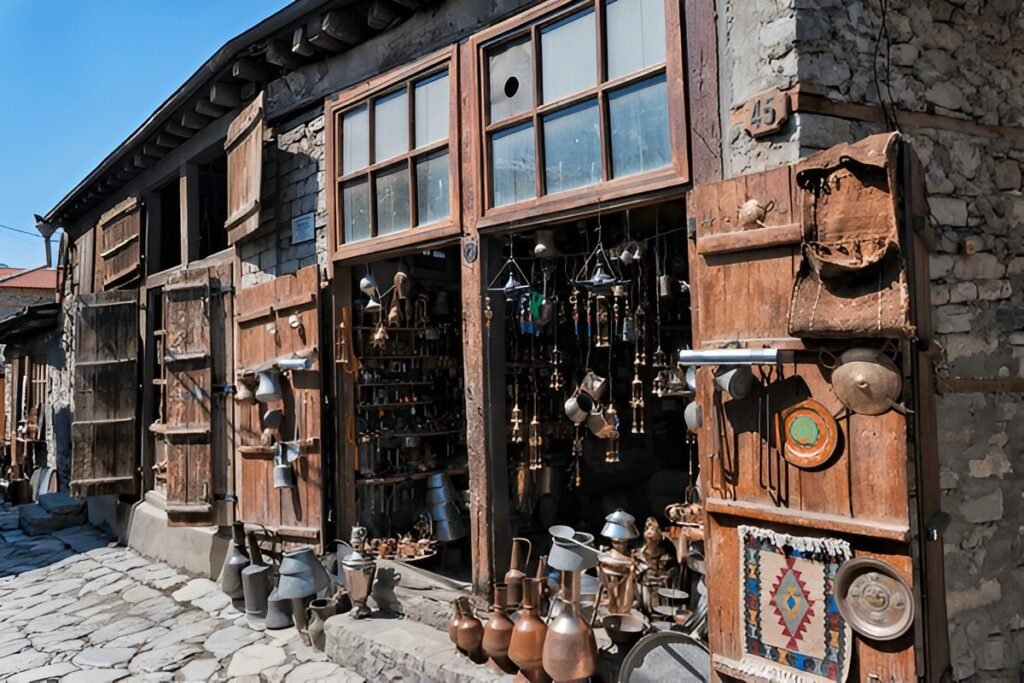Introduction
Nestled in the majestic mountains of the Greater Caucasus, Lahij Village is a picturesque gem renowned for its centuries-old blacksmithing traditions. Located in the Ismayilli region of Azerbaijan, this charming village is a living museum of craftsmanship and cultural heritage. Known for its cobblestone streets, wooden balconies, and vibrant bazaars, Lahij is a hub of artisanal excellence, particularly in metalwork. The blacksmith tradition in Lahij is not just a trade; it is an art form passed down through generations, embodying the spirit of Azerbaijani resilience and creativity. In this blog, we explore the history, techniques, and cultural significance of the blacksmithing craft in Lahij Village.
The Historical Roots of Blacksmithing in Lahij
- A Legacy of Craftsmanship
Lahij’s blacksmithing tradition dates back more than a thousand years, making it one of the oldest centers of metalworking in the Caucasus region. The village’s strategic location along the Silk Road allowed it to thrive as a center of trade and craftsmanship. Metal goods crafted in Lahij were highly sought after by traders and merchants traveling between Asia and Europe. - The Birthplace of Masterpieces
Artifacts from Lahij, including intricately designed swords, daggers, and household items, have been discovered in archaeological sites across the region. This speaks to the high demand and exceptional quality of Lahij’s blacksmithing products, which were often considered luxury items in ancient times. - Preserving Ancient Techniques
Unlike mass-produced goods, blacksmiths in Lahij continue to use traditional techniques and tools that have been preserved through centuries. This dedication to authenticity ensures that the craft remains a vital part of Azerbaijan’s intangible cultural heritage.
The Art of Blacksmithing in Lahij
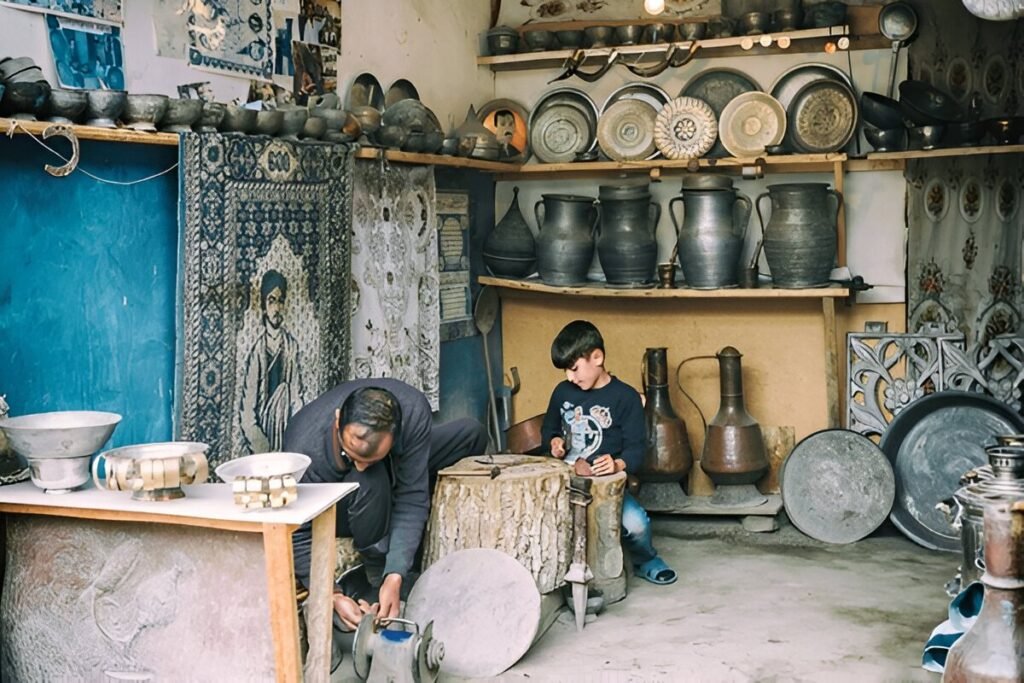
- Mastering the Craft
Becoming a blacksmith in Lahij is no easy feat. It requires years of apprenticeship under a master craftsman, known as a “ustad.” Apprentices learn the delicate art of heating, hammering, and shaping metal into intricate designs, as well as the importance of precision and attention to detail. - Tools and Materials
Blacksmiths in Lahij work primarily with iron, steel, and copper. They use traditional tools such as anvils, hammers, and bellows to shape the metal. One of the most iconic items produced in Lahij is the copper dish, often adorned with elaborate engravings and patterns. - Decorative Techniques
What sets Lahij’s blacksmithing apart is its emphasis on artistic expression. Craftsmen engrave intricate geometric patterns, floral motifs, and calligraphic inscriptions onto their creations, transforming functional items into works of art. These designs often reflect Azerbaijani cultural symbols, such as pomegranates and buta (paisley motifs).
Products of Lahij Blacksmiths
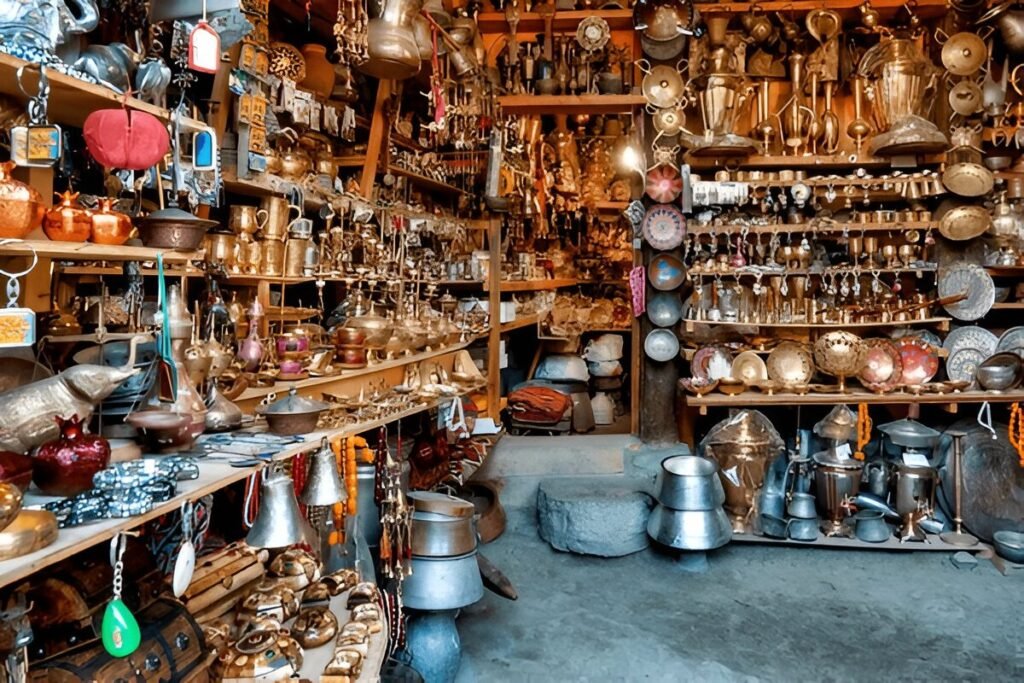
- Household Items
Copper cookware, such as pots, pans, and trays, is among the most popular products crafted in Lahij. These items are not only durable but also prized for their aesthetic appeal, making them a staple in Azerbaijani homes. - Decorative Pieces
From ornate candlesticks to engraved plates and wall hangings, Lahij blacksmiths create decorative items that are cherished as heirlooms. These pieces often find their way into homes and museums, both in Azerbaijan and abroad. - Traditional Weapons
Historically, Lahij was renowned for producing high-quality weapons, including swords, daggers, and shields. While these items are no longer in demand for combat, they remain popular as ceremonial pieces and collectibles.
The Cultural Significance of Blacksmithing in Lahij
- A Symbol of Identity
Blacksmithing is deeply woven into the cultural fabric of Lahij. It serves as a symbol of the village’s resilience and ingenuity, reflecting the community’s ability to adapt and thrive despite challenging conditions. - A Link to the Past
The craft preserves a tangible connection to Azerbaijan’s history and traditions. By continuing to use ancient techniques, Lahij’s blacksmiths ensure that their ancestors’ skills and knowledge are not forgotten. - Community and Economy
The blacksmithing industry is a vital source of livelihood for many families in Lahij. It also plays a significant role in the village’s tourism sector, attracting visitors eager to witness the artisans at work and purchase handcrafted items.
Lahij as a UNESCO-Recognized Site
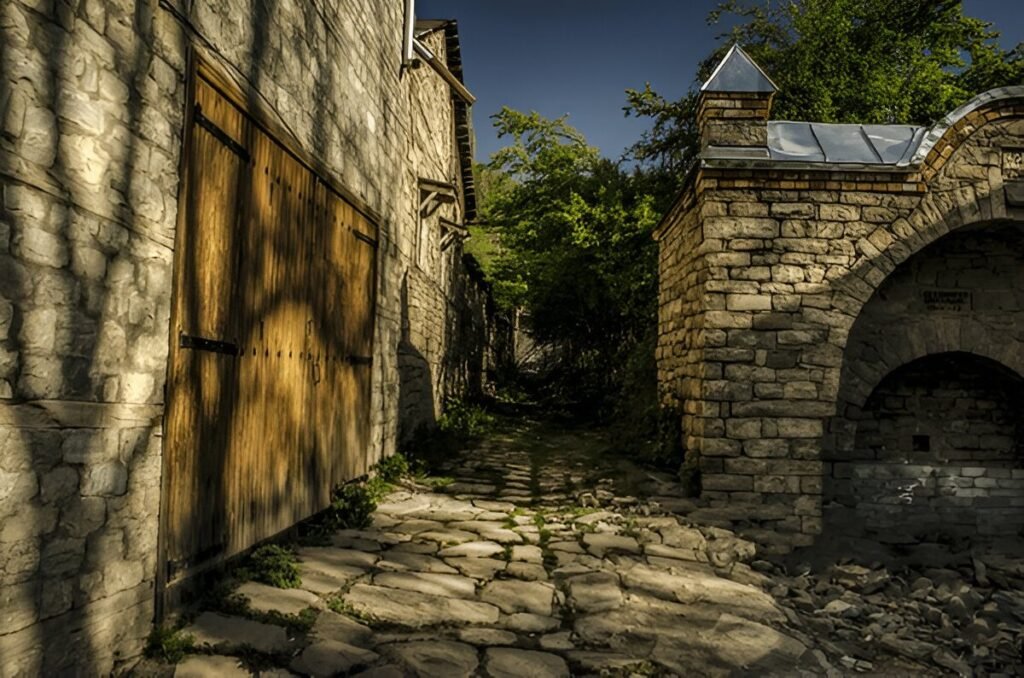 In 2015, Lahij was inscribed on the UNESCO Intangible Cultural Heritage list, recognizing its exceptional contributions to craftsmanship and cultural preservation. This designation has brought global attention to the village, further solidifying its status as a treasure of Azerbaijani heritage.
In 2015, Lahij was inscribed on the UNESCO Intangible Cultural Heritage list, recognizing its exceptional contributions to craftsmanship and cultural preservation. This designation has brought global attention to the village, further solidifying its status as a treasure of Azerbaijani heritage.
Visiting Lahij Village
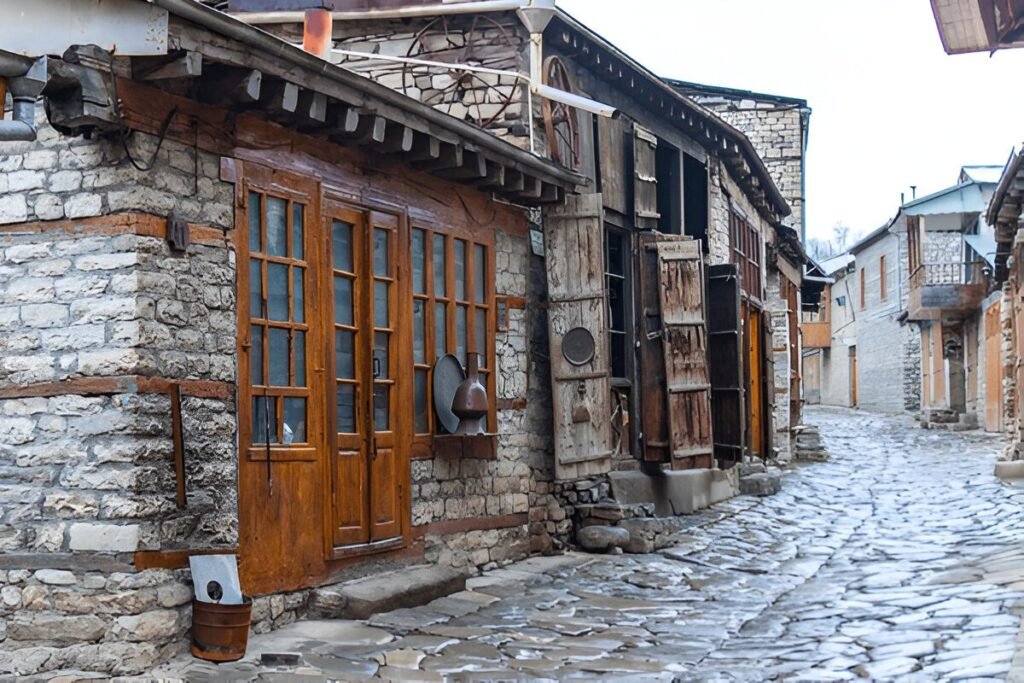
- A Journey Through Time
A visit to Lahij feels like stepping back in time. The village’s narrow, cobblestone streets are lined with workshops where blacksmiths, carpenters, and other artisans practice their crafts. Visitors can watch these skilled craftsmen in action, gaining a deeper appreciation for their work. - Shopping for Authentic Souvenirs
The bazaars of Lahij are a shopper’s paradise, offering an array of handcrafted goods. Whether you’re looking for copperware, jewelry, or decorative items, you’ll find unique, high-quality products that make for memorable souvenirs. - Exploring Local Attractions
Beyond its blacksmithing tradition, Lahij boasts stunning natural scenery and architectural landmarks. The village is surrounded by lush forests and mountains, making it an ideal destination for hiking and photography.
Blacksmithing in the Modern Era
- Challenges and Opportunities
While blacksmithing remains an integral part of Lahij’s identity, the craft faces challenges such as competition from mass-produced goods and a decline in the number of young people pursuing the trade. However, efforts by the Azerbaijani government and UNESCO to promote cultural tourism have helped revive interest in the craft. - Adapting to Modern Tastes
Many blacksmiths in Lahij have adapted their designs to appeal to contemporary tastes. This includes creating smaller, more portable items and experimenting with new patterns and materials, ensuring the craft’s relevance in the modern world.
Conclusion
The blacksmithing tradition of Lahij Village is a shining example of Azerbaijan’s rich cultural heritage and artistic excellence. It embodies the resilience, creativity, and pride of the Azerbaijani people, preserving ancient techniques while adapting to the demands of a changing world.
For visitors, a trip to Lahij offers a unique opportunity to witness this timeless craft firsthand, explore the village’s charming streets, and connect with the traditions that have shaped the region’s identity. Whether you’re a history enthusiast, a lover of artisanal goods, or simply seeking a memorable travel experience, Lahij promises to leave a lasting impression.



